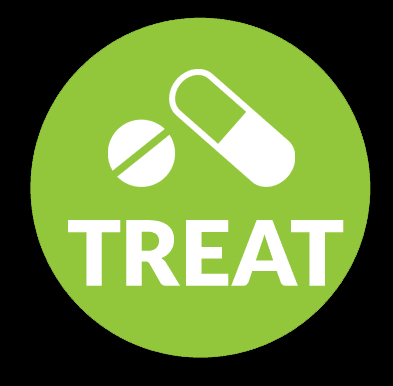STD prevention and treatment is not one-size-fits-all. CDC’s evidence-based resources ensure that you’re using the most effective methods, while also allowing you to tailor your counseling messages, testing, and treatment options to your patient’s specific needs. STD Awareness Month provides a refresher on the many ways that you can empower your patients to take charge of their sexual health. Talk. Test. Treat

-
Avoid assumptions - Talk to your patient about their sexual health.
-
Screening for asymptomatic infection is a cornerstone of STD prevention. In determining which STD tests are appropriate, ask “The 5 P’s” to assess your patient’s risk/s (Past, Partners, Practices, Prevention, and Pregnancy).
-
Discuss other associated risk factors and behaviors (e.g., substance misuse, incarceration, homelessness, pregnant partners, and intimate partner violence) and recommend testing when appropriate.

- Become familiar with CDPH's STD Screening Recommendations:
- Remember to test all sites of sexual exposure: Include urine, blood, and swabs from extragenital sites (throat and anus) when appropriate.
- All providers are legally mandated to report the following STDs to the Public Health Division: chlamydia, chancroid, gonorrhea, hepatitis A, hepatitis B, hepatitis C, HIV, syphilis, and Zika virus.

- Review the treatment guidelines for the most current treatment recommendations.
- Educate patients on the importance of abstaining during treatment and getting partners treated.
- Be aware of Expedited Partner Therapy (EPT) and collaborate with the Public Health Division to get partners treated.
JOIN CDC IN TACKLING THE DANGEROUS RETURN OF SYPHILIS
CDC’s STD Awareness Month web pages are filled with resources and guidance for both healthcare providers, as well as individuals who may be impacted by the disease. You can also join the conversation on Twitter and Facebook with #STDMONTH17.

Play the audio above for a 1940s-style PSA.
Once nearing elimination, national data find that syphilis is thriving. Rates are on the rise among men, women, newborns, a majority of age groups, all regions, and almost every race/ethnicity. Syphilis’s resurgence highlights its ability to affect many communities at anytime and anywhere. We cannot accept this as the new normal, and together, we can and must reverse these increases.